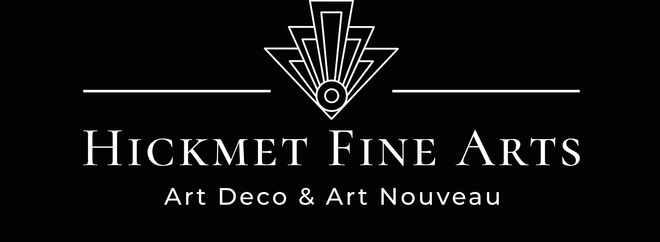A fabulous early 20th Century Art Deco gilt bronze and ivory figure of a dancer in flamboyant theatrical attire with matching headdress highlighted with enamel multi coloured and silvered decoration exhibiting excellent colour and fine hand carved detail, raised on an onyx base and signed Gerdago
Sorry, this item has been sold. If you would like information about similar items please contact us on 07971850405 or make an enquiry via email here.
ADDITIONAL INFORMATION
Height: 32 cm
Width: 20 cm
Depth: 14 cm
Condition: Excellent Original Condition
Circa: 1935
Materials: Cold Painted Bronze, Ivory and Onyx
Book Ref Art Deco and Other Figures by Bryan Catley
SKU: 8704
Defra Ref: 51TYCLUQ
ABOUT
Gerdago Biography
Gerda Ira Gerdago (Austrain, 1906 ~ 2004) was an Austrian theatrical costume designer and sculptor. Born in Vienna in 1906. We know that until 1927 she lived in Berlin, and in 1928-29 received her art education in Paris, where she worked as an assistant architect to Oscar Strand. From 1931 to 1934 she studied as a theatrical designer. She made costumes for the theatre "Femina", it was there that she met with Willy Forst. She worked as a dresser on his first film. She was a costume designer for numerous productions in Vienna's major theatres throughout the 1950s and 1960s and designed the costumes and posters for the Vienna Ice Revue shows from 1945 onwards.
Art Deco Period
The Art Deco Period: although Art Deco derives its name from the great 1925 Paris Exhibition, ‘L’Exposition Internatlionale des Arts Décoratifs et Industriels Modernes’, the term is now generally applied to the typical artistic productions of the 1920’s and 1930’s. It might best be characterised as an attempt to unite arts with industry, embracing the machine age and repudiating the old antithesis of ‘Fine’ and ‘Industrial’ art. The sources of the Art Deco movement include Egyptian and Mayan Art, Cubisim, Fauvism and Expressionism, heavily influencing the chief force underlying all Art Deco with the emphasis upon geometric patterns.














